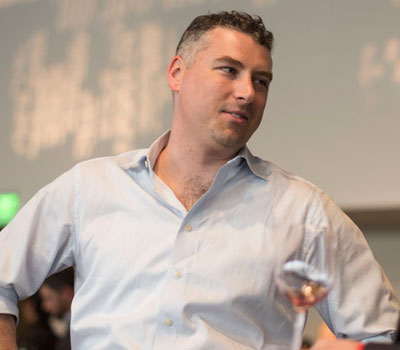In the years since chef Suzette Gresham and Giancarlo Paterlini founded Acquerello in 1989, San Francisco has changed radically. The hills on the north side of the city, which rise both east and west of Acquerello, were historically magnets for quiet old money. Today, the city has converted to tech and Paterlini’s son, Gianpaolo, finds himself working to build bridges with a new audience. He left his post at Michael Mina to join the restaurant as wine director in 2010 and has built the list from 750 wines to 2,350—about one-third Piedmont and one-tenth Champagne. His contemporary challenge is to translate Old World hospitality to the Instagram set. A guest might come in to check the box on a Selosse Substance or a 1985 Giacomo Conterno Monfortino Barolo on their wine app; Paterlini is hoping they will come back and explore beyond the celebrity names. This year, his list has grown a little, he says, “because we pulled some wines from the cellar we thought were ready to drink.” He adds that Rafael Santos, Acquerello’s head sommelier, “is usually down there digging with me. He’s been my right hand for ten years.”


Are you still building your Champagne list? We got past the 250 mark this year. It’s growing very steadily. As I’ve told you before, my goal is to have the best Champagne list on the planet. We’re probably adding about 20 wines a year and that’s mostly through building verticals of producers we already love. This year, I broke out three pages on individual producers: Agrapart, Selosse and Pierre Peters. I have 20-plus selections from all three, and once you get to that point it looks kind of silly to have anything else on the same page. So, I break it off.
Whose wines do you feature that prominently in Piedmont? We break out pages of verticals for Bartolo Mascarello, Rinaldi, three pages for Giacosa, two for Giacomo Conterno, one for Aldo Conterno, one for Grasso, two for Gaja. That might be it. My dad had organized the list by village; the verticals were my input. By 2010, we put Gaja and Conterno and Giacosa on their own pages; we had enough to warrant it.
Your wine sales were 20 percent sparkling several years ago, and are now 15 percent. Are you still selling as much Champagne? It’s not shrinking. Overall, sales in 2019 were flat or a touch less than in previous years. But our wine sales are not that different in Champagne. We’re a fancy place and a celebratory place; when people walk through the door and they’re dressed up, Champagne just seems like an obvious decision.
It may be that the average price of other wines has been going up and Champagne prices are not climbing as much. We were paying $300 a bottle for [Giacomo Conterno] Monfortino a few years ago, then it was rising for the 2006 and 2008, and then the 2010 was more than $500. Pricing in Barolo just keeps going up and up. Because we have such big verticals, I raise the price on the older wines a little bit. We try to keep our prices as reasonable as possible, but we have to be aware of the market and raise them to an extent.
It’s interesting that, despite the wealth of Champagne and Piedmont wines, four out of your top ten best-selling bottles are from California: a pinot noir, a cabernet, a chardonnay and a sauvignon blanc. You have the classic four California varieties there. We still get so many tourists traveling to San Francisco, and they want to try something local. And then there are the young people in the tech scene who order what they know.
Still, the 2014 Grasso Barolo at $120 was your best new success this year. What drove that? The vintage? The price? It was the 2014 vintage specifically. In 2014, he decided to blend all his vineyards together to make one wine—a classic—and he dropped the price a bit. What I think is awesome is that in Piedmont, when a vintage is challenging, they drop the price and give you something of incredible value. You don’t see that in Bordeaux or Burgundy. That wine did really well.
Joshua Greene is the editor and publisher of Wine & Spirits magazine.
This is a W&S web exclusive. Get access to all of our feature stories by signing up today.
















